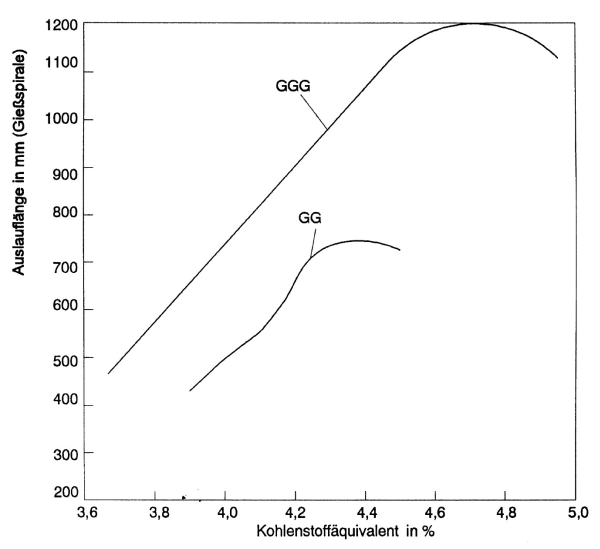Fluidity
Capacity of molten metal to flow within a flow channel or inside the mold over a defined distance.
For the most part, fluidity depends on the chemical composition (Fig. 1) of the respective alloy and on temperature. The greater the difference between freezing and pouring temperature, the better the fluidity of a metal. Moreover, the solidification interval also has great influence.
Eutectic alloys hardly have solidification intervals and thus result in greater outfeed lengths than materials with wide solidification intervals. Fluidity is often determined using a test device known as the fluidity spiral. Fluidity is not identical with the mold-filling property.
Additional references:
Outfeed process
Flowability
Castability


